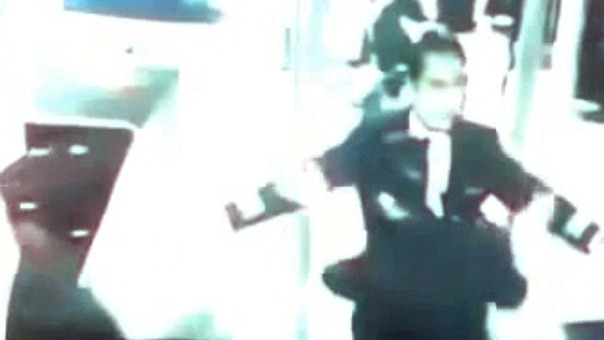MH370’s co-pilot ‘tried to use mobile in mid-flight’
Secret MH370 report suggests Zaharie Shah’s co-pilot may have tried to use his mobile mid-flight, reinforcing hijack theory.

An expert review of evidence from a secret MH370 report suggests the flight’s first officer may have tried to use his mobile phone mid-flight, reinforcing the theory the captain hijacked his own aircraft after locking the co-pilot out of the cockpit.
Minutes before the Boeing 777 was lost from radar on March 8, 2014, a mobile telephone registered to the aircraft’s co-pilot, Fariq Abdul Hamid, was detected by a telecommunications tower at Bandar Baru Farlim Penang.
And the co-pilot’s family was never told.
Speaking for the first time, Fariq’s father, Ab Hamid Bin Md Daud, told The Weekend Australian that Malaysian authorities had not informed him of his son’s mobile phone detection.
“No. I don’t know about that,” he said from his Selangor home. “That’s beyond my information.”
A Malaysia police investigation report into the disappearance of Flight MH370 — completed in May 2014 but kept secret — revealed that Telco Celcom had detected a mobile phone number, registered to Fariq on March 8, 2014, at 1.52:27am, Malaysian time.
“MH370 co-pilot’s mobile phone was reported as detected in Celcom’s mobile network in Penang by Sector 2 of BBFARLIM2 Base Station,” the secret report said. “Based on the recorded flight path of MH370 obtained from PDRM, it is noted that MH370 was flying in the coverage area of Sector 2 BBFARLIM2 Base Station at 1.52:59am ... which is close to the time it was detected by the BBFARLIM2 Base Station.”
Mike Keane, the former chief pilot of Britain’s largest airline, EasyJet; said the mobile phone either remained on from takeoff or was switched back on midflight to make an emergency call.
Like most professionals in the aviation business, he believes Captain Zaharie Shah hijacked his own aircraft in a complex act of mass murder-suicide.
Mr Keane reckons Zaharie would have asked his “compliant” first officer to go to the cabin — for a concocted reason — before locking the cockpit door, isolating himself with an oxygen supply and depressurising the aircraft.
“The first officer would have been skilled in responding to depressurisation due to regular training,” he said. “If Fariq had his mobile phone with him, he would have grabbed an oxygen bottle before taking his phone off flight mode or switching it on.
“If someone was going to make a transmission with the phone, it’s likely to be the crew because they are trained to get oxygen on as quickly as possible.”
After failing to establish communication, the phone would have remained on.
Matthew Sorell, senior lecturer in telecommunications at the University of Adelaide and adjunct professor of digital forensics at the Tallinn University of Technology, confirmed the mobile phone appeared to have already been switched on before the plane approached Penang.
Dr Sorell, who has extensive operational experience in forensic analysis of mobile phone network records, said the mobile phone connection happened at the edge of the coverage cell, indicating the handset was performing a “new location area update”.
“This means the phone was on, and responded automatically when it detected the cell signal over Penang,” he said. “That ping occurs about 28 seconds after entering new coverage space, which is what would be expected in the case of a location based update.”
The elevated, high-powered base station that detected Fariq’s phone is built to provide wide-area rural coverage stretching 32km over mountainous terrain.
When a local newspaper first reported details of the phone detection in April 2014, Malaysian authorities called for the publication to be “severely punished” for printing a “bare-faced lie” and engaging in “gutter journalism”.
The confidential police report from May 2014, later leaked online, confirmed Malaysian authorities knew about Fariq’s phone detection by April 24 of that year.
Despite this, Malaysia made no mention of it in its Factual Information Safety Investigation report released in March 2015.



To join the conversation, please log in. Don't have an account? Register
Join the conversation, you are commenting as Logout